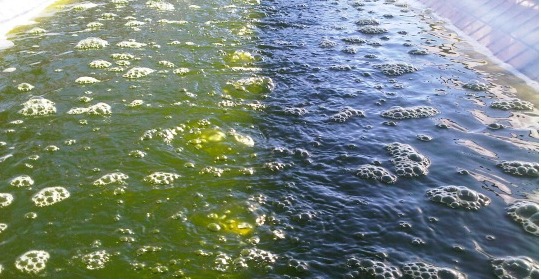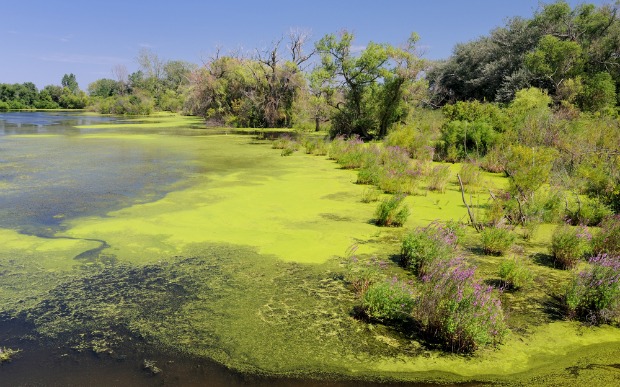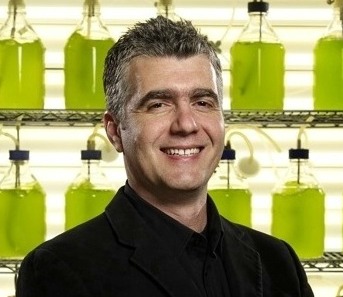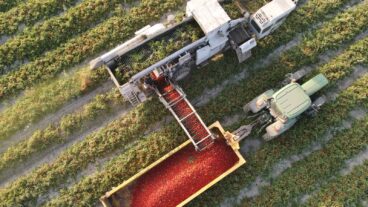Algae come in different shapes, sizes and colors — from unicellular micro-algae to macro forms, and from red to yellow to blue to green. The plantlike organisms bloom in ponds, rivers, lakes and neglected swimming pools; the biblical prophet Jonah complained about algae enveloping his head his when he was dumped out of the boat at sea.
But while algae can be a pest to prophets and pool cleaners, thanks to Israeli innovation algae are forming the basis of next-generation biofuels, medical therapies and sustainable vegan-based vitamins. How is Israel transforming and applying algae in the bio-marketplace? In big ways.
Spread the Word
• Email this article to friends or colleagues
• Share this article on Facebook or Twitter
• Write about and link to this article on your blog
• Local relevancy? Send this article to your local press
1. Univerve’s fatty green fuel
Israel’s Univerve, founded in 2009, is a clean-tech company from Tel Aviv focusing on breeding algae as a feedstock for biofuel. Looking to create the world’s “fattiest” algae using special breeding techniques, the company is also creating a unique bioreactor to squeeze high percentages of biofuel from micro-algae grown in undesirable saline water under harsh desert conditions.
Univerve’s pilot plant in Rotem Industrial Park maintains a focus on third-generation biofuels that do not compete with food sources, and the company boasts a winning team of plant-breeding experts, industrialists and business advisers.
2. Commercial algae farm
Not putting all its algae in one bucket is Israel’s Seambiotic, an established algae farm and production company that provides algae feedstock to the nutraceuticals industry, while at the same time pursuing novel ways to grow algae to make it a competitive biofuel in the long run. The company’s successful pilot plant using the polluting smokestacks of the power industry works with the Israel Electric Company in Ashkelon, with promising algae business deals underway in the United States, Italy and in China.
Seambiotic launched its first commercial algae farm this year in China to help the growing country capture carbon while creating a nutritious byproduct. The company expects to be a major algae biofuel contender in the future when the market is ready. Meanwhile it paves the way using algae in carbon-capture projects and in the food additives business.
3. Nutritional additive
Seambiotic isn’t the only company to see the nutritional value in algae. The nutraceutical and food additive company Lycored is making Omega 3 health supplements from algae. As the world catches on to the health benefits of Omega 3, usually sourced from fish oil, Lycored produces Lyc-O-Mega 10 AL, a vegan and sustainable product available worldwide, made from simple algae.
The company’s technology relies on a process called micro-encapsulation so that bakers and confectioners can add in a healthy dose of Omega 3, also known as docosahexaenoic acid (DHA), to consumer products such as bread, without the need for dietary supplements and fishy burps that go along with the daily dose.
4. Restoring ‘wild’ taste and vitamins to farmed salmon
What makes wild salmon so pink, tasty and healthy? It’s Haematococcus pluvialis, a type of algae they eat. Farmed fish can be fed what the wild salmon eats naturally, says a team led by Prof. Sammi Boussiba from Ben-Gurion University in Israel.
This team developed a way to cultivate a natural algae feed for farmed salmon to give the fish a vitamin boost that gets passed on to our plates. The natural variety of colorant called astaxanthin is still an expensive and niche product, but the researchers and their advisors expect it will catch on in time, as more consumers choose the natural and organic catch of the day.
5. Reducing dangerous algae blooms
Every decade or so, a toxic algae bloom proliferates around Israel’s Sea of Galilee, threatening the people, wild animals and pets that play and live off the inland lake, and the many citizens who rely on Israel’s only freshwater lake for drinking water. Hebrew University researchers suspect the culprit is a sly cyanobacteria that enslaves other micro-organisms in its nasty mission of creating algae blooms that cut off sunlight and deplete water from oxygen, thereby starving fish.
In 2010, these researchers explained the biological mechanisms behind this dirty trick. How this information is applied may help scientists better cope with mitigating algae blooms in the future.
6. Algae to heal hearts
An Israeli biotech company is applying a brown seaweed (marine algae) that produces an incredible amount of polyunsaturated fatty acid to reduce blood pressure, alleviate chronic inflammation and reduce blood cholesterol level – all factors that lower the risk of heart attacks, according to Israel’s BioLineRx.
One novel application is a seaweed-based gel that can be injected into tissue to coat the heart muscle and help it heal after a heart attack. The gel works its way into the heart’s ischemic tissue, where it acts to stop the heart from dilating and becoming further damaged.
7. TransAlgae
Founded in 2008, the Israeli company TransAlgae is working to create genetically altered varieties of algae to feed farmed fish, and also algae for biofuel. Based on the research of Prof. Jonathan Gressel at the Weizmann Institute of Science, TransAlgae has already commercialized an algae-growing system to produce Allboost, a product that helps fish and crustacean farmers fatten their stock while improving survival rates.
In the pipeline is an algae strain that can help fish fend off viruses. In the future TransAlgae also intends to develop algae-based products to boost the well-being of livestock, and eventually human health as well.
8. Harvesting algae at sea
Creating algae ponds near power plants, or on tracts of arid desert land, is one way to make room for this new kind of biofuel feedstock. But a research team at Tel Aviv University has invented a novel aquaculture system to grow algae out at sea to create a win-win: making fuel while solving ecological problems on coastal regions caused by pollution created by fish farming and human waste.
The Combined Aquaculture Multi-Use System feeds off the pollution, creating a favorable environment in which good biofuel feedstock algae can thrive. The project is led by Prof. Avigdor Abelson of the department of zoology and the new Renewable Energy Center, who asserts that marine macroalgae (seaweed) can be grown faster at sea.
9. Micro-algae to lower cholesterol?
Researchers at Ben-Gurion University in Beersheva have discovered that a mutant algae strain found in freshwater can produce an important polyunsaturated fatty acid necessary for human nutrition and brain function. They believe that this novel algae-based nutrient could reduce blood pressure, chronic inflammation and blood cholesterol levels. In harmony, all these effects lower heart attack risk. The next step is to test it in the lab and clinic.
10. Isaac Berzin
This Israeli scientist spent years researching fuel alternatives in the United States. Thanks to his curiosity, drive and motivation, there has been a renewed interest worldwide in the production of algae for biofuel. Berzin, one of TIME magazine’s “100 most influential people” for 2008, showed that earlier NASA-based biofuel experiments could work if the algae bioreactors were set up in a different way.
He became the founder of the company GreenFuel in 2001, which closed shop in 2009, probably because it was ahead of the curve and burned capital too quickly. He is now working on new biofuel projects at the Interdisciplinary Center in Herzliya.
* Israeli innovation is turning algae into a range of vital new products. Photo by www.shutterstock.com
An algae bloom on a pond. Photo by www.shutterstock.com






















